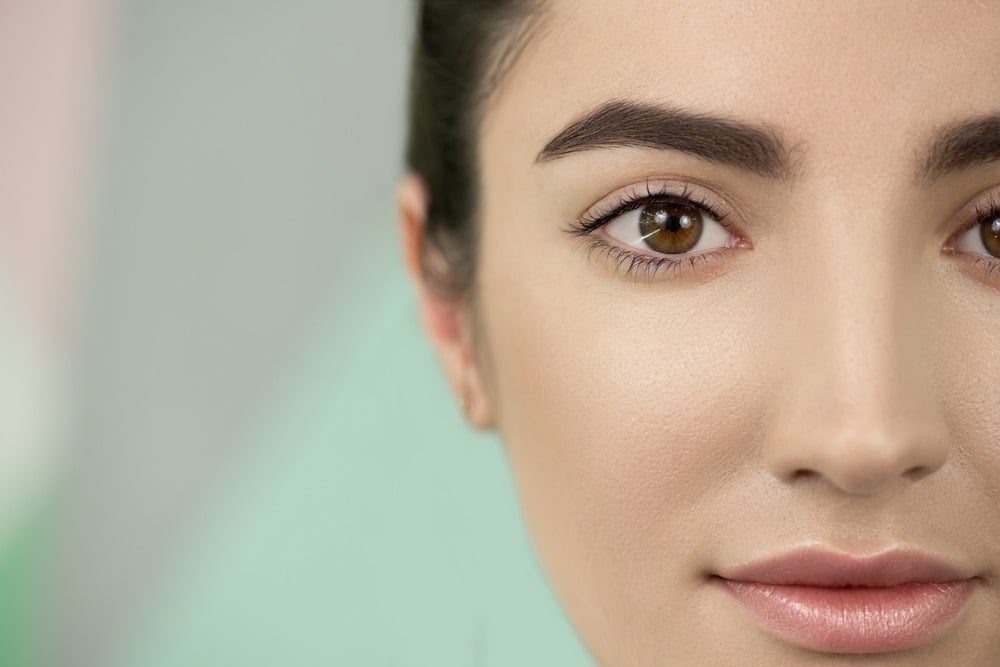A brow lift can greatly enhance the look of your face, but taking care of the scars is key to achieving the best outcome. We provide detailed strategies, from pre-surgery preparation to ongoing care, to ensure that scars become less visible.
Dr. Ran Y. Rubinstein, an expert in the field, shares important tips on how to manage scars effectively. His approach blends medical accuracy with handy advice to help heal and hide brow lift scars better.

Keeping Brow Lift Scars Under Control
- Massaging the scarred area gently after a brow lift can improve healing and make scars less noticeable.
- Silicone gel sheets or tapes, when used on brow lift scars, can help flatten and fade them over time.
- Keeping brow lift scars protected from the sun is crucial, as UV exposure can darken scars, making them more visible.
- A healthy diet rich in vitamins and minerals supports faster healing of brow lift scars.
- Consulting with a dermatologist for professional treatments, like laser therapy, can further minimize the appearance of brow lift scars.
Pre-Surgical Measures for Minimizing Brow Lift Scars
For brow lift patients who want to reduce scars, selecting the right surgeon is crucial. A comprehensive consultation is needed to go over any questions about the brow lift and examine pre-operative skin care.
During the initial consultation, it’s important to evaluate the surgeon’s experience and their method for the surgical procedure. The ideal surgeon focuses not just on improving the appearance of the eyebrows and upper eyelids but also on achieving minimal scarring.
This step involves discussing everything from pre-operative skin care to care after the surgery, highlighting the need to select the right surgeon who values both the aesthetic results and the patient’s care.
Immediate Post-Surgical Care to Reduce Brow Lift Scar Visibility
After a brow lift, implementing immediate post-surgical care is key to reducing the visibility of scars. Key aspects of care include:
- Proper Wound Care: Keeping incisions clean is fundamental to preventing infections that could lead to more pronounced post-surgical scarring.
- Managing Swelling and Bruising: Applying gentle cold compresses can significantly reduce swelling and bruising around the surgical area on the forehead, aiding in recovery.
- Medications that Promote Healing: Using pain medication as prescribed helps alleviate discomfort, while certain other medications can reduce inflammation and speed up the healing process.
Surgical techniques are carefully chosen to minimize scarring, which, when coupled with diligent recovery practices, greatly affects the eventual visibility of scars. Incisions are typically made along the natural lines of the forehead to ensure that, with proper care, healing is optimized, leading to a smoother brow lift recovery with minimal visible scarring.
Long-Term Brow Lift Scar Management and Reduction Techniques
To enhance the healing of scars from a brow lift and minimize visible scarring, a tailored treatment plan incorporating various techniques is essential. These methods are designed to suit individual needs, aiming for minimized scarring and smooth-looking forehead skin.
Silicone Gel Sheets and Scar Creams
These products keep the forehead skin moisturized, improving the healing of brow lift scars and making them less noticeable.
Laser Therapy for Scar Reduction
This technology targets scars from brow lift procedures effectively by improving the skin’s texture and appearance.
Microneedling and Other Dermatological Treatments
These treatments smooth the skin’s surface, making direct brow lift scars and other marks less visible.
Sun Protection Strategies
Protecting the skin from sun exposure is critical in preventing scars from darkening. Regular use of sunscreen helps protect the forehead skin, preventing the worsening of visible scarring.
Natural Remedies and Their Efficacy in Brow Lift Scar Healing
Natural remedies have become popular for treating scars after a brow lift. These often involve essential oils and herbal treatments that work gently with the skin’s healing process.
Vitamin E and Scar Healing: Myths and Facts
There’s a lot of information out there about Vitamin E and its role in scar care. It’s important to recognize that Vitamin E might help some people, but it’s not a guaranteed solution for everyone.
The success of natural methods in improving the appearance of scars greatly varies depending on the person’s skin type and the character of the scar. Opting for a tailored approach, natural remedies can serve as an additional option alongside traditional scar healing strategies.
Makeup and Concealment Techniques for Brow Lift Scars
- Choosing the Right Products: It’s crucial to use a concealer that offers full coverage and closely matches your skin tone for effectively hiding brow lift scars.
- Professional Tips for Scar Concealment: It is recommended to apply makeup with care to ensure the scars blend well with the rest of the skin.
Using makeup and concealment techniques correctly not only covers the scars but can also boost your confidence as the scars heal.

When to Seek Further Professional Treatment for Brow Lift Scars
If your scar hasn’t improved with basic care, it may be time to consider further professional treatment. Here are clear indicators:
- Signs Your Scar May Require Additional Medical Attention: If you experience discomfort, noticeable discoloration, or changes in texture.
- Surgical Revision and Other Professional Scar Treatments: These specialized solutions can significantly enhance the appearance and feel of brow lift scars, offering a pathway to recovery and confidence.
Lifestyle Changes to Support Brow Lift Scar Healing
Lifestyle changes are important for improving skin health and helping brow lift scars heal faster. Here are beneficial practices:
- Nutrition and Hydration for Skin Health: Eating a balanced diet rich in vitamins and minerals supports skin repair. Staying hydrated is equally important as it maintains skin elasticity and aids in healing.
- The Role of Exercise in Skin and Scar Healing: Engaging in low-intensity exercises enhances blood circulation, potentially accelerating scar healing. Choose activities that don’t stress the facial area to avoid any adverse effects.
Incorporating these lifestyle changes, alongside adhering to post-surgery care instructions, significantly contributes to the scar healing process.
Common Challenges and Solutions in Managing Brow Lift Scars
- Addressing Hypertrophic Scars and Keloids: Implementing specific treatments and care techniques is crucial for proper healing and reducing the visibility of scars over time.
- Managing Expectations: Reality vs. Desired Outcome: Patients must understand what is realistically achievable through surgery and subsequent scar management to ensure satisfaction with the results.
- Identifying common challenges: The healing process varies among individuals, with some patients potentially developing more noticeable scars.
- Offering solutions in scar management: Essential strategies include recommending suitable scar treatment products, procedures, and lifestyle adjustments to enhance healing and improve scar appearance.
For helpful advice on caring for brow lift scars, consider setting up a time to talk with Dr. Ran Y. Rubinstein. He is a well-trained face surgery expert who aims for natural outcomes. His work involves teaching patients and offering modern treatments for making your face look younger. His offices are in Newburgh, NY, New York, NY, and Montvale, NJ.
You can count on Dr. Rubinstein to help you heal well with skilled support. Please consider making an appointment to discuss your needs.
